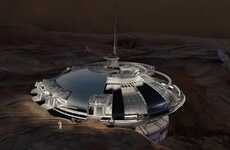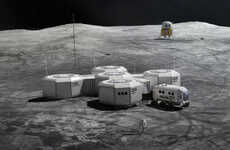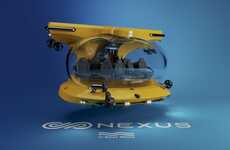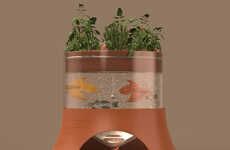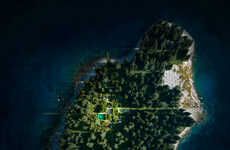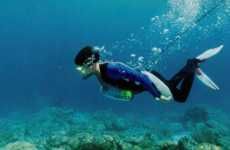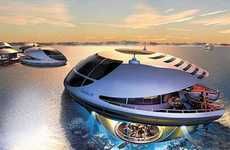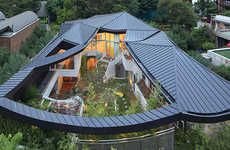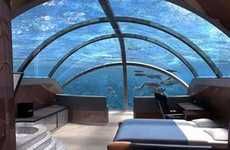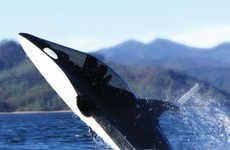
The Sub-Biosphere 2 Is a Self-Sustainable Underwater Habitat
Pauley Interactive — June 15, 2010 — Eco
References: pauley-interactive & philpauley
The Sub-Biosphere 2 is the original self sustainable underwater habitat designed for aquanauts, tourism and oceanographic life sciences and long-term human, plant and animal habitation.
This unique underwater habitat sustains all its life support systems for air, water, food, electricity, and other resources through its innovative control of variant atmospheric pressures that occur at depth.
SBS2 is a seed bank with eight Living Biomes to allow human, plant and fresh water interaction, powered and controlled by the Central Support Biome which monitors the life systems from within its own operations facility.
Designed by Phil Pauley and visualised by Pauley Interactive, the Sub-Biosphere 2 has been posted to generate interest for an X Prize entry.
This unique underwater habitat sustains all its life support systems for air, water, food, electricity, and other resources through its innovative control of variant atmospheric pressures that occur at depth.
SBS2 is a seed bank with eight Living Biomes to allow human, plant and fresh water interaction, powered and controlled by the Central Support Biome which monitors the life systems from within its own operations facility.
Designed by Phil Pauley and visualised by Pauley Interactive, the Sub-Biosphere 2 has been posted to generate interest for an X Prize entry.
Trend Themes
1. Self-sustainable Underwater Habitats - The development and construction of self-sustainable underwater habitats using innovative life support systems presents a disruptive innovation opportunity for the aquanaut, tourism and oceanographic life sciences industries.
2. Variant Atmospheric Pressure Control - The innovative control of variant atmospheric pressures that occur at depth presents a disruptive innovation opportunity for creating sustainable habitats in extreme environments, such as deep sea mining, undersea exploration, and space colonization.
3. Living Biomes with Central Support Biome - The integration of living biomes with a central support biome that monitors life systems from within its own operations facility presents a disruptive innovation opportunity for sustainable agriculture, botany, and ecology.
Industry Implications
1. Aquanaut - The development of self-sustainable underwater habitats creates new opportunities for aquanaut exploration and research.
2. Tourism - Self-sustainable underwater habitats offer potential for unique tourism experiences, and could disrupt the hospitality and travel industries.
3. Oceanographic Life Sciences - The design and construction of self-sustainable underwater habitats presents a disruptive innovation opportunity in the field of oceanographic life sciences for long-term human, plant, and animal habitation.
6
Score
Popularity
Activity
Freshness



